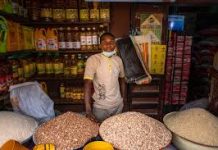Rice Farmers Association of Nigeria (RIFAN) has identified the continued the smuggling of rice into the country as a major challenge facing the rice industry.
Mr Aminu Goronyo, the President of RIFAN, said this in Abuja at the Competitive African Rice Initiative (CARI) workshop organised by the German Federal Ministry for Economic Cooperation and Development (BIZ), and implemented by Deutsche Gesellschaft für Zusammenaebeit (GIZ), GmbH.
Goronyo, who was represented by Mr Mayosu Awodi, the association’s National Secretary said that rice had continued to top smuggling seized items by the Nigeria Customs Service, with a total of 124,407 bags of rice seized in the first half of 2018.
According to him, the major cause of smuggling is because of implementation of high tariff in Nigeria and non-implementation of the Common External Tariff (CET) by members of the Economic Community West Africa States (ECOWAS).
Mr Adekunle Lawal, the Secretary-General, Africa Rice Advocacy Platform said that Africa had continued to enjoy consistent increase in the demand for rice.
He said that countries such as Nigeria, Algeria, Senegal, Sudan, Gambia and Niger were among those with increasing demand for rice.
“Africa is a major rice consuming nation but we spent lots of money on importing rice which needs to be addressed,’’ he said.
Mr Mohammed Auwal, the Director, ATAFI Agro Merchandise Service Ltd., commended CARI in its efforts to improve rice production in the country through capacity building for local farmers.
“We have 15, 000 registered farmers in Jigawa whom their capacities have been built so far in partnership with GIZ CARI.
“We gave them several training such as farmers’ business square bears, food and agricultural square bears, African rice advice on Android phones on proper utilisation of fertiliser and management.
CARI has organised various trainings for farmers aimed at empowering rice farmers by increasing their competitiveness of domestic rice supply, thereby increase their income above poverty line.
Both the productivity and improvement were achieved through Good Agricultural Practice (GAP).














